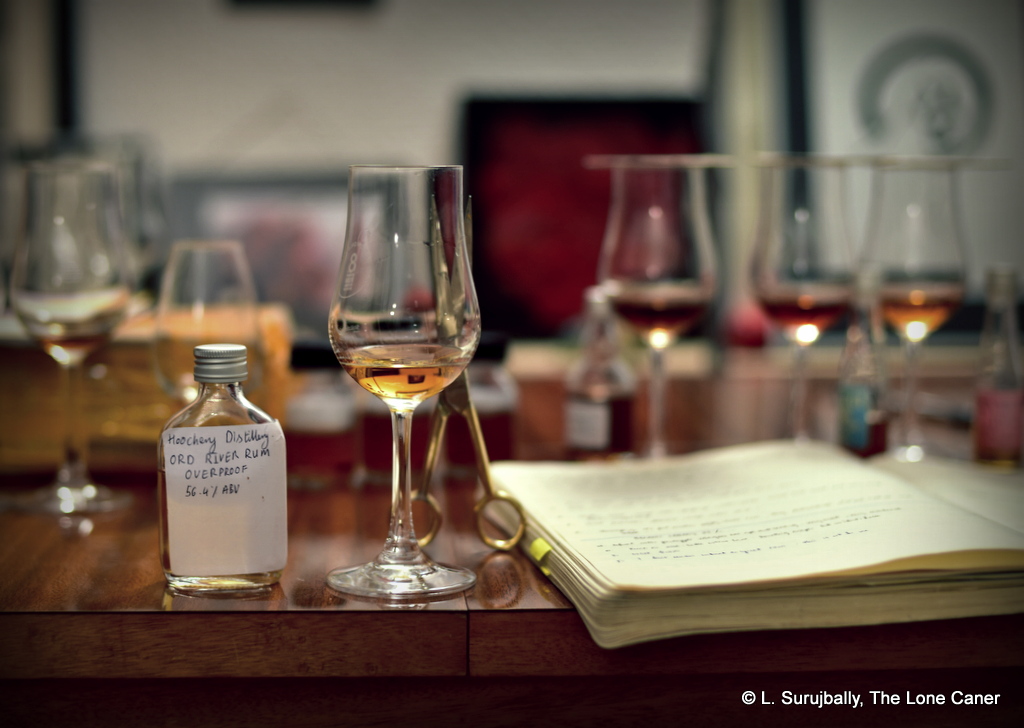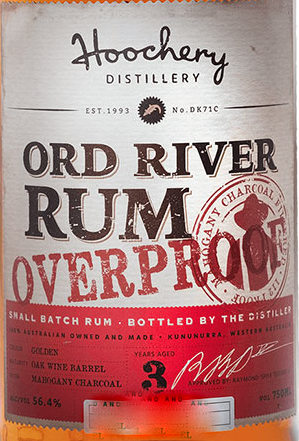
Hoochery Distillery’s name derives from, as you might imagine, the word “hooch”, a slang term for moonshine, or illegal liquor, popular during Prohibition. Some references place the word’s origin as even earlier, with the Hoochinoo Native American tribe of Alaska, who supposedly – and unusually – made their own liquor. Whatever the case, a hoochery is a now apparently trademarked word for a low-end small-scale distillery making (you guessed it) hooch, specifically in Australia, which has a long history of formalizing words from the vernacular in new and charming ways.
The distillery itself was established in 1993 in north-western Australia’s remote Kimberly outback by Raymond “Spike” Dessert. He had been in the area since 1972 and when in the 1990s the Ord River irrigation area permitted sugar cane to be grown, he figured that the tropical climate, sugar cane, and need to diversify suggested a distillery. That’s the way the company legend runs, but maybe he just liked rum and couldn’t get any worth drinking there, who knows. What’s clear is like many independent men in a frontier province, he went about it by making stuff himself and learning as he went along, an ethos his company’s website emphasizes quite strongly.
They make several spirits – whiskey, gin, liqueurs – and quite a few rum expressions (up to 15 years old) with Australian molasses, yeast, local water and a five-day fermentation period — the wash is then run through a self-made double pot still, which keeps things at a low alcohol percentage to keep as many flavours in play as possible. There seems to be a lot of manual labour and hands-on work involved in the entire process, which may be why the annual output of the distillery remains low. This one, their overproof, is a 56.4% three year old rum, and it’s quite an unusual beast, let me tell you.
 The nose begins with metallic, ashy notes right away, damp cardboard in a long-abandoned, leaky musty house. Thankfully this peculiar aroma doesn’t hang around, but morphs into a sort of soya-salt veggie soup vibe, which in turn gets muskier and sweeter over time; it releases notes of bananas and molasses and syrup, before gradually lightening and becoming – surprisingly enough – rather crisp. White fruits emerge – unripe pears and guavas, green apples, gooseberries, grapes. What’s really surprising is the way this all transforms over a period of ten minutes or so from one nasal profile to another. It’s not usual, but it is noteworthy.
The nose begins with metallic, ashy notes right away, damp cardboard in a long-abandoned, leaky musty house. Thankfully this peculiar aroma doesn’t hang around, but morphs into a sort of soya-salt veggie soup vibe, which in turn gets muskier and sweeter over time; it releases notes of bananas and molasses and syrup, before gradually lightening and becoming – surprisingly enough – rather crisp. White fruits emerge – unripe pears and guavas, green apples, gooseberries, grapes. What’s really surprising is the way this all transforms over a period of ten minutes or so from one nasal profile to another. It’s not usual, but it is noteworthy.
The palate is more traditional and harbours few surprises except for how different from the aromas it turns out to be. The strength is good at 56.4% ABV and starts out very spicy – in fact, this is one of those cases where it feels stronger than it is, instead of the other way around. It’s a melange of tart fruit – strawberries, ripe mangoes, ginnip, apricots – together with brine, olives and bananas. Some molasses and vanilla and rotten oranges at the back end, as well as a slight bitterness, a tannic element, which may derive from the mahogany wood used for the filtration (either that or the barrels used for ageing were very active, or new). The finish was pretty good, providing final touches of molasses, fleshy fruits, salt, and some citrus and tart soursop to close off the show.
The rum as a whole started off well, and the nose suggested a great new style of rum snapping into focus. But somehow it fails on the tongue: it retains a raw sharpness without ever calming down and some of that initial promise is lost; it tastes rough and uncoordinated, and not as pleasing as that nose (and the initial taste) suggested it might be. It remains, to the end, very dry and glitteringly sharp, and not in a good way. The three years of ageing it had were not, I deem, entirely sufficient which makes me really interested in the 10 YO or 15 YO which they make, and how they managed to soften those.
It’s a measure of how much the Caribbean distilleries and their brands dominate the rum conversation that scant attention is paid to other lands which have a long rum tradition of their own. Part of it is that rums from, for example, Australia, don’t get marketed in the west very often, selling mostly in their own country and around Asia. I can’t say that this rum is a must-have, or that it should be on any Best-Of list made by every blogger under the sun – it’s really not on that level (or the one beneath that). But I have to admit it’s interesting, it’s new, and it’s different. I haven’t had anything like it before. In a world where we’re seeing a different overpriced indie pop up every week, perhaps paying the same money for something offbeat and unusual from Down Under might just be the way to renew our sense of what a rum can be, or aspire to.
(#786)(82/100)
Other notes
- Charcoal filtered through mahogany chips.
- Seems to be only available in Australia for now
- The tongue in cheek company profile says it’s the oldest legal distillery in Western Australia.
- Many thanks to Nicolai Wachman from Denmark, who, knowing of my desire to try more rums from Oz, spotted me this generous sample.